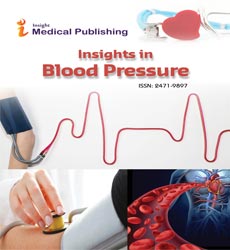Abstract
Serum Soluble (Pro) Renin Receptor Level is Increased in Association with Impaired Renal Function in Patients with Autosomal Dominant Polycystic Kidney Disease
Autosomal-prevailing polycystic kidney ailment (ADPKD) is brought about by changes in PKD1 or PKD2, the qualities encoding polycystin-1 and - 2. ADPKD influences between 1 of every 500 to 1000 individuals and is described by the moderate advancement of huge liquid filled blisters in the kidneys. The growths cause sensational expansion of the kidneys and bargain the useful uprightness of the rest of the parenchyma. Renal capacity starts to decrease in the fourth decade of life, when the glomerular filtration rate (GFR) begins decline by 4.4 to 5.9 ml/min per year, and critical disabilities of renal capacity create by late middle age. The declining GFR rate has been seen as moderately consistent in Japanese ADPKD patients and not to be corresponded with age or with GFR after puberty. Patients with ADPKD create hypertension sooner than those with basic hypertension and beginning stage hypertension is the significant indicator of renal result in ADPKD. Renin, angiotensinogen, and angiotensin (AT)- II are delivered in pimples furthermore, expanded tubules, and are distinguished in cystic liquid. Treatment of hypertension by renin-angiotensin framework (RAS) inhibitors is powerful in postponing decline of renal capacity. The serum level of prorenin, an antecedent of renin, is raised up to a few hundred creases in diabetes patients and is a prescient marker of the beginning of microvascular harm. In specific, youthful diabetic patients with high serum prorenin levels are at expanded danger of creating retinopathy and microalbuminuria. The (pro)renin receptor [(P)RR] is a explicit receptor for renin and prorenin and was distinguished as a individual from the reninangiotensin framework (RAS) by Nguyen et al. (P)RR is a 350-aminoacid protein with a solitary trans film area and is generally communicated in different organs, counting the cerebrum, heart, and kidney .
Author(s):
Kosaku Nitta
Abstract | PDF
Share this

Google scholar citation report
Citations : 71
Insights in Blood Pressure received 71 citations as per google scholar report
Abstracted/Indexed in
- Google Scholar
- China National Knowledge Infrastructure (CNKI)
- Directory of Research Journal Indexing (DRJI)
- WorldCat
- Secret Search Engine Labs
Open Access Journals
- Aquaculture & Veterinary Science
- Chemistry & Chemical Sciences
- Clinical Sciences
- Engineering
- General Science
- Genetics & Molecular Biology
- Health Care & Nursing
- Immunology & Microbiology
- Materials Science
- Mathematics & Physics
- Medical Sciences
- Neurology & Psychiatry
- Oncology & Cancer Science
- Pharmaceutical Sciences
